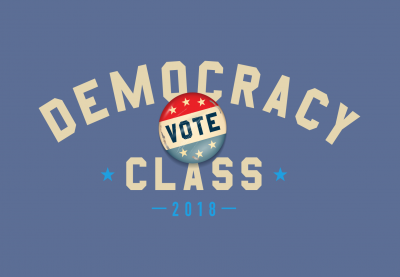Teaching Tolerance and Rock the Vote combined forces in 2018 to update a series of classroom-ready, adaptable and remixable lesson plans: Democracy Class!
Here are the learning objectives:
- Students will recognize the ways that local and state governments affect their lives.
- Students will recognize the value of a single vote.
- Students will identify ways their state’s laws work to encourage or suppress voting.
- Students will connect the history of voter suppression in the United States to the present.
- Students will recognize that the expansion of voting rights in the U.S. has not been a smooth path, nor has it been a history of continuous progress.
- Students will correct common myths about voting in the U.S.
- Students will discuss the effects of misinformation about voting.
- Students will learn how to register to vote.
The three classes—“Not Just Every Four Years,” “The History of Voting Rights” and “The Truth About Voting”—can be taught individually or sequentially. The classes are designed as a series of connected but modular activities. Although aimed at high school students, middle school and even upper elementary teachers will find useful ideas and activities in Democracy Class.
Each lesson includes scripts accompanied by “key points,” so teachers can either present the lessons as written or use the key points to create a mini-lecture or activity best suited to their students. At the end of each lesson plan, educators can choose to either walk students through the voter registration process or (if they’ve already done so) continue the lesson with an extension and wrap-up activity.
Read on to learn more about the individual lesson plans, or sign up now to download all three (for free) from Rock the Vote.
Not Just Every Four Years
Traditionally, two of the most compelling reasons young people don’t register or vote is that they feel as though their votes don’t matter and that the policy decisions elected officials make don’t affect their daily lives. In “Not Just Every Four Years,” students learn just how false both of those ideas are. Students may be surprised to learn that questions like “Do we check the immigration status of everyone detained by police?” and “Do we allow teachers to carry guns at school?” are decided at the state or local level. They’ll also have an opportunity to learn about how their state makes voting easier or more difficult, and to evaluate Rock the Vote’s ranking of their state as a “leader,” “slacker” or “blocker” in voting rights.
Level: Intermediate
Our Favorite Activity: “Who Decides?” in which students work in teams to guess whether policies are set at the local/state level or at the federal level.
The History of Voting Rights
Do your students know that, in New Jersey, women and free men of color could vote from the time of the American Revolution until 1807? In “The History of Voting Rights,” students reflect on the “story of voting” we get when we just look at constitutional amendments, which is a story of continuous expansion (first black men, then women, then residents of D.C., then 18-year-olds). Then they compare that narrative with “the story of voting” we get when we look a little more closely and see how the franchise expanded and contracted throughout the history of the United States. Recognizing the degree to which Americans have continuously fought for the right to vote, students are encouraged to consider the forms voter suppression might take today—and to consider how we might make it easier for all Americans to exercise their right to vote.
Level: Advanced
Our Favorite Activity: “Human Timeline,” in which students line up according to the dates and information on “voting rights cards” before sharing their knowledge with the class.
The Truth About Voting
Instead of merely providing students with facts about the process and history of voting in the United States, this lesson asks them to think about some common voting myths. Students work in groups and move around the classroom, thinking and talking through some of the most common misconceptions. Discussing statements like, “Presidential elections are the only ones that really matter” or “My vote doesn’t count,” students push back against some of the most popular reasons why people sit out elections. They also consider how these myths became so popular—and who might benefit or lose out as a result of them. Finally, students pledge to counter these myths in the future, using their voices (or their votes) to ensure a more just democracy for everyone.
Level: Beginner
Our Favorite Activity: “Vote With Your Feet,” in which students divide into five groups and move across the classroom to visualize the effect of voter disillusionment on voter turnout.
